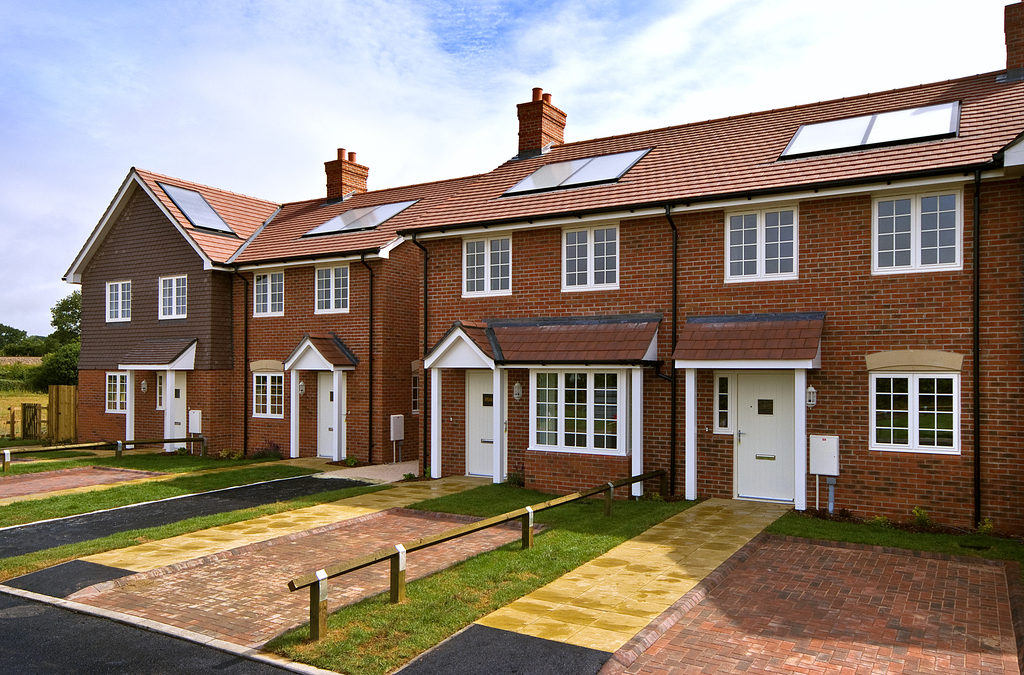
Tony Mueller, Director
GRS | Corteq
(312) 476-7621
tmueller@fv2.d32.myftpupload.com
It’s no secret that the multifamily sector of commercial real estate has had a very strong run since the Great Recession. Even though apartment supply is increasing, leading to a temporary slight dip in some locales’ fundamentals, overall housing development is well below historical lows over the last several decades.
But there is one area where the multifamily sector has lacked significant traction – affordable housing.
An exhaustive Urban Land Institute report on affordable housing released in September touches on the severity of the problem and some solutions, most of which the organization says can be remedied by changes in state government policies.
For starters, ULI says that one in four renters, or 11.1 million U.S. households, pay half or more of their income on housing. Reports have that number increase by another 1.3 million over the next 10 years.
The culprit is limited supply. Often, for several reasons, investors can’t afford to build lower-income multifamily assets and then collect rents high enough to cover development costs, especially in cities where they are most needed, where there are growing economies and job pools.
Part of those major costs has to do with the land-use and zoning regulations, as well as other fees, imposed by local municipalities, which can widely vary.
However, ULI contends that state governments have constitutional powers that can override some of these obstacles for developers, though in many cases they don’t get involved on the local level. State courts, for example, have the power to change zoning classifications.
In its report, ULI lists five ways that states can be a catalyst for municipal affordable housing:
Ensure That Localities and Regions Are Assessing Their Housing Needs for the Future: You can’t know what you need if you aren’t aware of what you don’t have. Though this alone does not solve the problem, it can help. California’s Department of Housing and Community Development is an example of an agency that requires cities to assess their housing needs, through a process called RHNA (regional housing needs allocation). Virginia recently started a similar plan. In both cases, this more clearly defines the need for affordable housing in several regions.
Provide Incentives to Local Communities to Zone for New Housing: ULI argues that states should assist local communities, which often aren’t equipped to tackle major zoning changes, in helping them come up with an overall zoning framework, giving technical assistance and modest funding incentives. The organization points to both the Connecticut Investment Housing Zones and the Massachusetts Smart Growth Zoning Overlay District Act as two favorable examples of this in action.
Reduce Regulatory Requirements That Increase Costs and Stifle Development: States are also able to provide various initiatives that can lower construction and regulatory costs for affordable housing. In Minnesota, there is a streamlined approval process for particular projects, fee reductions and waivers, provisions for greater density and less parking requirements in some instances. California also has reduced parking requirements for developments near public transit, as well as fewer fees associated with accessory dwelling units.
Authorize Municipalities to Invest Their Own Resources Linked to Pro-Housing Land Use: This is already happening in Washington state, wherein certain designated areas, municipalities are allowed to abate property tax for eight to 12 years for multifamily developments. Then, 20 percent of those units must be devoted to low-income housing. In Utah, there is a similar program that gives tax-increment financing to developers that build apartments in blighted areas as long as 20 percent are low-income-dedicated units. Texas also has a similar program.
Enable Local Communities to Overcome Unreasonable Neighborhood Opposition: There is always going to be a NIMBY aspect to affordable housing development. Government officials and developers might come to agreeable terms, but then a community group is able to block a project for several different reasons. Massachusetts’ answer is a law called Chapter 40B. If 10 percent of the housing in a community is not affordable, then a project with low-income apartments is allowed if it fulfills all other requirements. Additionally, developers are allowed to have 20 percent of their housing affordable despite public disagreements.
This is just a summary, so please read the full ULI report here.
The demand for affordable multifamily will only increase as the cost of living in certain metro areas continues to increase. Hopefully, this and other solutions can solve this problem, and at the same time, make it profitable for commercial real estate developers and investors.
About GRS Group
GRS Group is a leading provider of commercial real estate (“CRE”) services worldwide. With offices across the United States, Europe, and affiliates around the globe, GRS Group provides local market knowledge with a global perspective for institutional real estate investors, occupiers and lenders worldwide. The GRS Group team has evaluated and advised on over $1 trillion in CRE transactions.
Through the company’s proprietary management process, Global Services Connection, GRS Group delivers an integrated suite of services including Financial Advisory, Transaction Management, Assessment and Title Insurance. We provide a single point of contact, capable of leveraging the GRS Group portfolio of companies and delivering customized solutions to assist our clients in achieving their investment goals.

